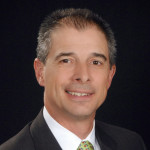 I walked the streets of Charlotte, N.C., four nights last week. I walked alongside protesters clad in Black Lives Matter t-shirts and all the signs: “Am, I Next?” “Hands up. Don’t shoot.” “End white silence.”
I walked the streets of Charlotte, N.C., four nights last week. I walked alongside protesters clad in Black Lives Matter t-shirts and all the signs: “Am, I Next?” “Hands up. Don’t shoot.” “End white silence.”
I walked in blue jeans and a black collared shirt. Since Baptists generally do not wear clerical collars a liturgical stole identified me as part of a kind of godly barrier between protesters and police. As I type those words, I am struck by their irony and tragedy. The clergy from our city were called to the front lines to stand between those who “protect and defend,” and those whom they are charged to protect and defend. So were we, the clergy, there to protect the police from the protesters, or the protesters from the police?
I’ve never thought of my role, in representing God, in quite this way.
After Keith Scott was killed by an officer in the line of duty (what was his duty?), there were clergy on duty, on the front lines, when Justin Carr, an African-American protester, was also killed, allegedly by another protester. Clergy were there, and I also witnessed my colleagues in the breach standing between tense stands of angry protesters and riot clad officers in blue. They stood as a voice of reason, a visual representation of Peace, urging the police to stand down and the crowd to move on.
Even as the church in America declines in significance, if we are to believe the data, there is yet an authority yielded to the church and its leadership. There have been several times in the course of three decades of ministry that I have sensed the weight of that authority vested in me, but none more poignantly and powerfully than in the streets of Charlotte.
Our clergy were young and old, an interfaith and ecumenical representation. We were men and women, and we were black and white — though we who are white were relatively few in number, and who we are tells an interesting story.
Many of the white clergy were associate ministers — maybe younger and more idealistic? Maybe more free from the pressing, more “important” concerns that senior ministers face? Maybe less attuned to the pressures of congregational expectation, or congregational misunderstanding and disapproval? Other white ministers represented smaller, more “alternative” congregations, those whose passions and commitments to social justice or racial and economic equality put them outside the bounds of mainline Protestantism (another irony to consider).
There were very few white pastors who represent the large, mainline Protestant churches whose steeples are recognizable landmarks in our city, those who are accorded a legitimate voice within the halls of power, with city leaders and business executives. And there were very few pastors there whose congregations represent conservative or evangelical Christian concerns.
Walking along Trade Street a young clergyman stepped beside me. We exchanged names, and when I asked what church he served, he replied that he was from a Winston-Salem congregation, in a noticeably conservative denomination. He volunteered his next words: “Most folks in my denomination don’t care much for this kind of stuff.”
In the streets. With the people. Hearing their pain. Seeing their faces. Understanding their stories. We don’t care much for this kind of stuff.
Maybe there’s a reason the church in America is in decline. Maybe we should not doubt the data.
The call to be in the streets was not a call to stand as a monolithic voice against law enforcement. It was not an unqualified defense of the latest victim (who was shot while reading a book — or was that a gun in his hand?). It was not a call to march in lockstep with the many angry voices in the crowd.
Unfortunately a call to justice is never so neat.
But there are only two logical explanations for our current, sad state of affairs. Either the vast problems in large segments of our black communities — economic deprivation and crime and the breakdown of the family — are the result of the blacks in those communities, or the problem is larger than that. And if the problem is much larger, as I believe it is, blacks in the community and blacks out of the community, whites connected to those communities and whites completely isolated from the problems and pain in those communities — we are all part of the problem. And we are all called to be part of the solution.
But we will not be part of the solution if we only represent a comfortable, apathetic, separated religion.
So, to my white clergy colleagues: if you missed the marches in Charlotte, don’t worry, unfortunately there’s plenty of time. We need you involved. The hard conversations about how we got here and where we will go from here are just beginning — and a protest may be coming to your city very soon.
